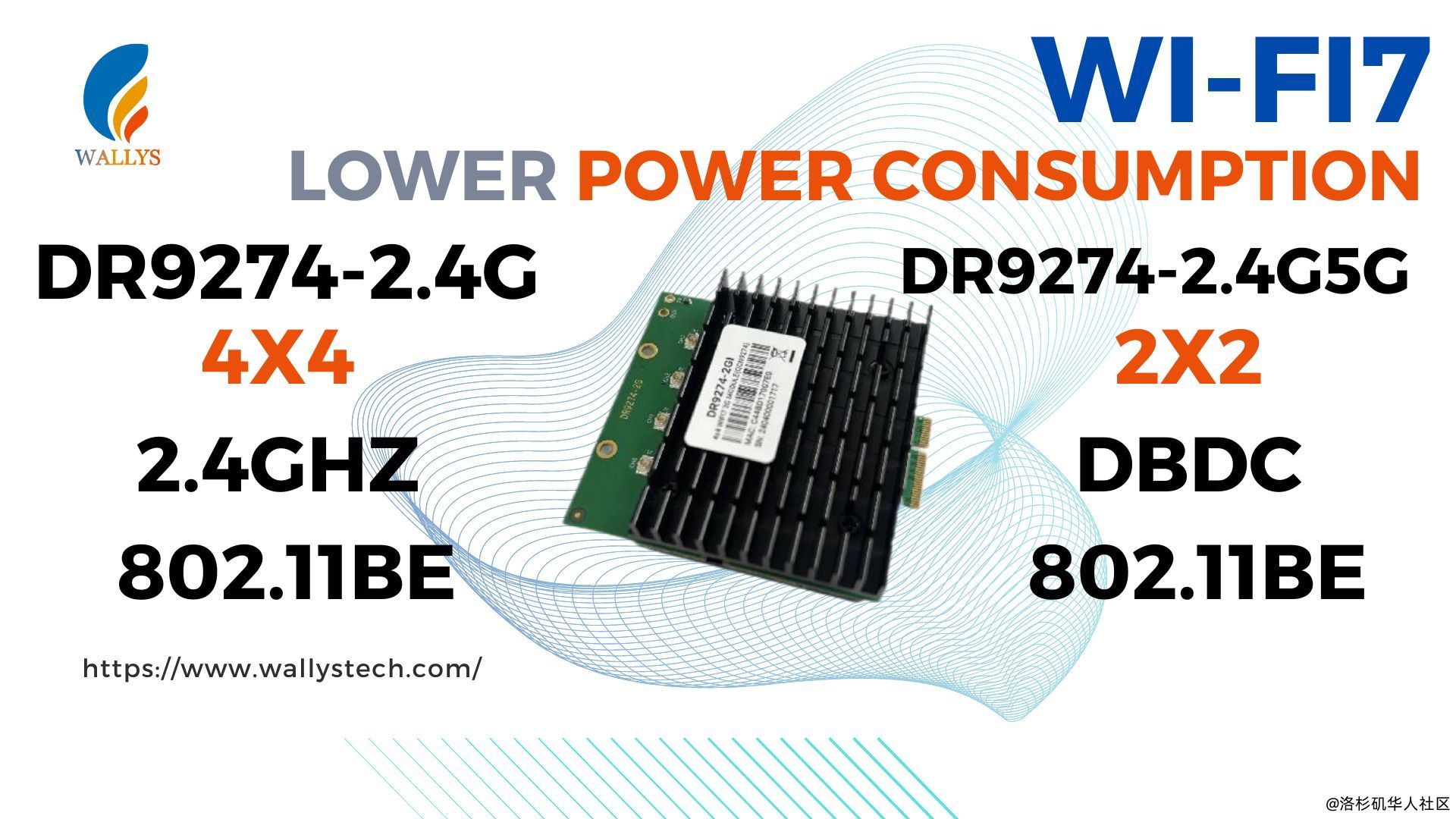In the realm of wireless networking, Qualcomm's IPQ series of chipsets are well-regarded for their robust performance and advanced features. Two notable models in this lineup are the IPQ5322 and the IPQ4019. While both chipsets cater to high-performance applications, they differ in several key aspects that influence their suitability for various use cases. This article provides a technical comparison and application analysis of these two chipsets.
Technical Comparison
1. Architecture and Performance:
– IPQ5322:
– CPU: Quad-core ARM Cortex-A53 at 1.5 GHz
– Networking: 2.5Gbps Ethernet and 10Gbps Ethernet
– Wi-Fi: Supports Wi-Fi 7 (802.11be)
– Frequency Bands: Dual-band (2.4 GHz and 5 GHz)
– Max Throughput: Up to 10 Gbps
– Memory Support: DDR4 up to 2400 MT/s
– IPQ4019:
– CPU: Quad-core ARM Cortex-A7 at 716 MHz
– Networking: 1Gbps Ethernet
– Wi-Fi: Supports Wi-Fi 5 (802.11ac)
– Frequency Bands: Dual-band (2.4 GHz and 5 GHz)
– Max Throughput: Up to 1.7 Gbps
– Memory Support: DDR3/DDR3L up to 1333 MT/s
2. Wireless Capabilities:
– IPQ5322:
– Features support for the latest Wi-Fi 7 standard, which includes enhanced OFDMA, MU-MIMO, and 4096-QAM, significantly improving network efficiency, speed, and capacity.
– Capable of handling more simultaneous connections with higher throughput, making it ideal for high-density environments.
– IPQ4019:
– Supports Wi-Fi 5, providing reliable performance with features like MU-MIMO and 256-QAM, but lacks the advanced capabilities of Wi-Fi 7.
– Suitable for less demanding applications where ultra-high throughput and the latest Wi-Fi 7 features are not critical.
3. Networking and Connectivity:
– IPQ5322:
– Advanced networking capabilities with 2.5Gbps and 10Gbps Ethernet support, facilitating faster wired connections and backhaul capabilities.
– Enhanced for complex network architectures including mesh networks and enterprise-level deployments.
– IPQ4019:
– Standard 1Gbps Ethernet, suitable for typical home and small business networking needs.
– Adequate for basic networking tasks but may struggle with more demanding, high-throughput scenarios.
4. Power Efficiency and Thermal Management:
– IPQ5322:
– Designed for higher performance with a more efficient 14nm manufacturing process, balancing power consumption and performance.
– Suitable for devices requiring sustained high performance without overheating.
– IPQ4019:
– Built on an older 28nm process, resulting in higher power consumption relative to performance.
– Best for devices where power efficiency is not as critical.
Application Analysis
1. Enterprise and High-Density Environments:
– IPQ5322:
– Ideal for enterprise-level access points, routers, and mesh systems where high throughput, numerous concurrent connections, and advanced features like Wi-Fi 7 are crucial.
– Suitable for environments such as large offices, campuses, and public venues with high user density.
– IPQ4019:
– Fits smaller office environments or less demanding enterprise applications where the latest Wi-Fi standards are not essential.
– Appropriate for small to medium-sized businesses looking for reliable but not cutting-edge performance.
2. Home Networking:
– IPQ5322:
– Perfect for smart homes requiring the best performance for streaming, gaming, and handling numerous smart devices.
– Future-proofs home networks with support for the latest Wi-Fi 7 technology, ensuring top performance as the number of connected devices grows.
– IPQ4019:
– Well-suited for standard home networking needs, offering a solid performance for everyday tasks such as web browsing, streaming, and online gaming.
– Provides a cost-effective solution for households without a large number of connected devices.
3. Specialized Applications:
– IPQ5322:
– Suitable for IoT applications where high data throughput and robust connectivity are necessary, such as in smart cities or advanced industrial environments.
– Ideal for scenarios requiring advanced network features and superior performance.
– IPQ4019:
– Adequate for simpler IoT applications where basic connectivity is sufficient.
– Appropriate for use in devices like home automation hubs, basic smart devices, and other applications where cutting-edge performance is not critical.
Conclusion
Both the IPQ5322 and IPQ4019 chipsets offer significant benefits but are tailored to different use cases. The IPQ5322 stands out with its superior performance, advanced Wi-Fi 7 support, and high throughput, making it ideal for demanding enterprise environments and future-proof home networks. The IPQ4019, on the other hand, offers reliable performance for less demanding applications, providing a cost-effective solution for standard home and small business networking needs.
Choosing between these two chipsets depends largely on the specific requirements of the deployment environment, the performance needs, and the budget constraints. At Wallys, we are committed to helping you find the right solution for your wireless networking needs. Contact us to learn more about our products and how we can assist in optimizing your network performance.
Email: sales1@wallystech.com
Website: https://www.wallystech.com/



































